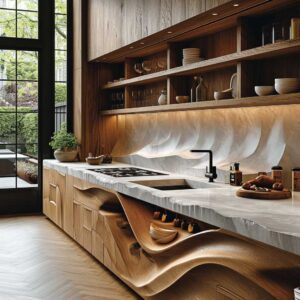Embrace the fusion of functionality and aesthetic appeal in contemporary kitchen design. This article delves into the world of modern kitchen interiors, highlighting the essentials of design that blend practicality with a touch of elegance. Discover how contemporary elements can transform your cooking space into a stylish and efficient area.
Sleek Surfaces and Bold Lines in Contemporary Kitchen Design

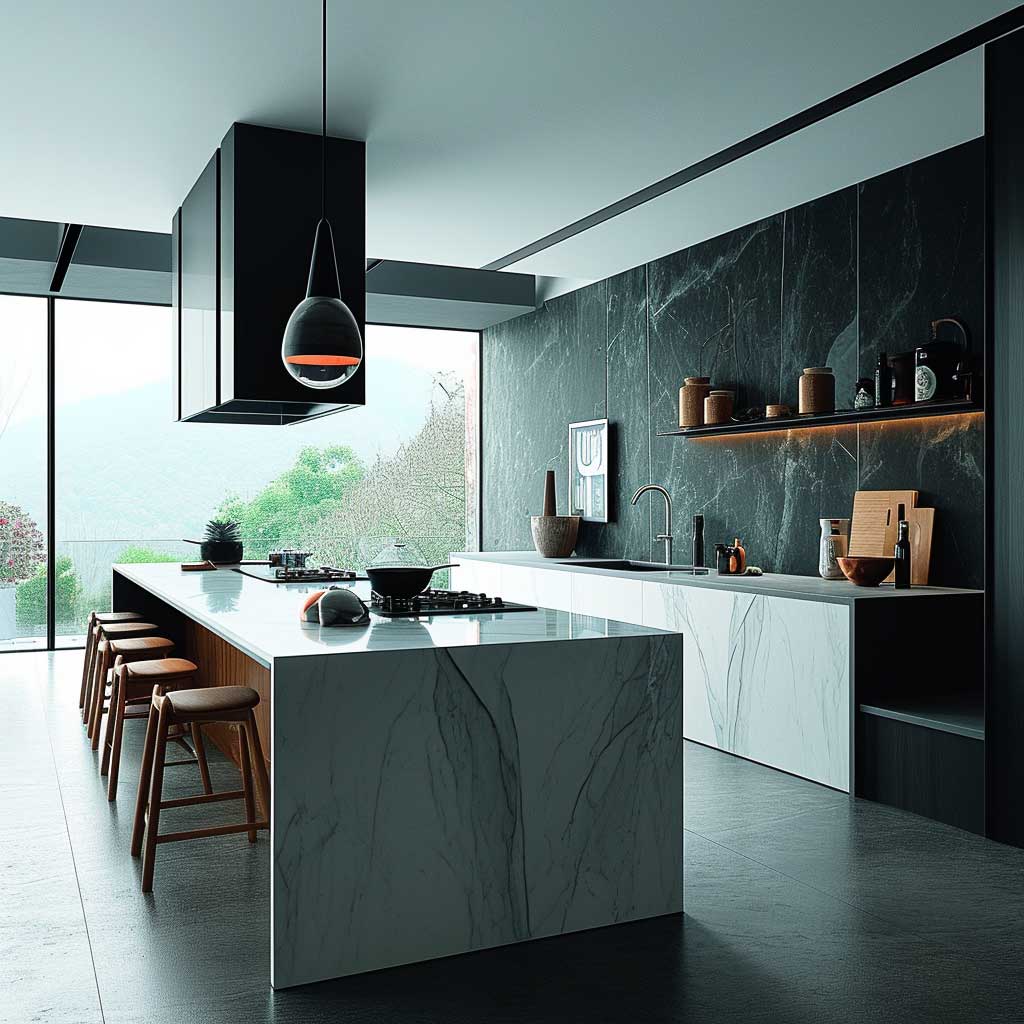
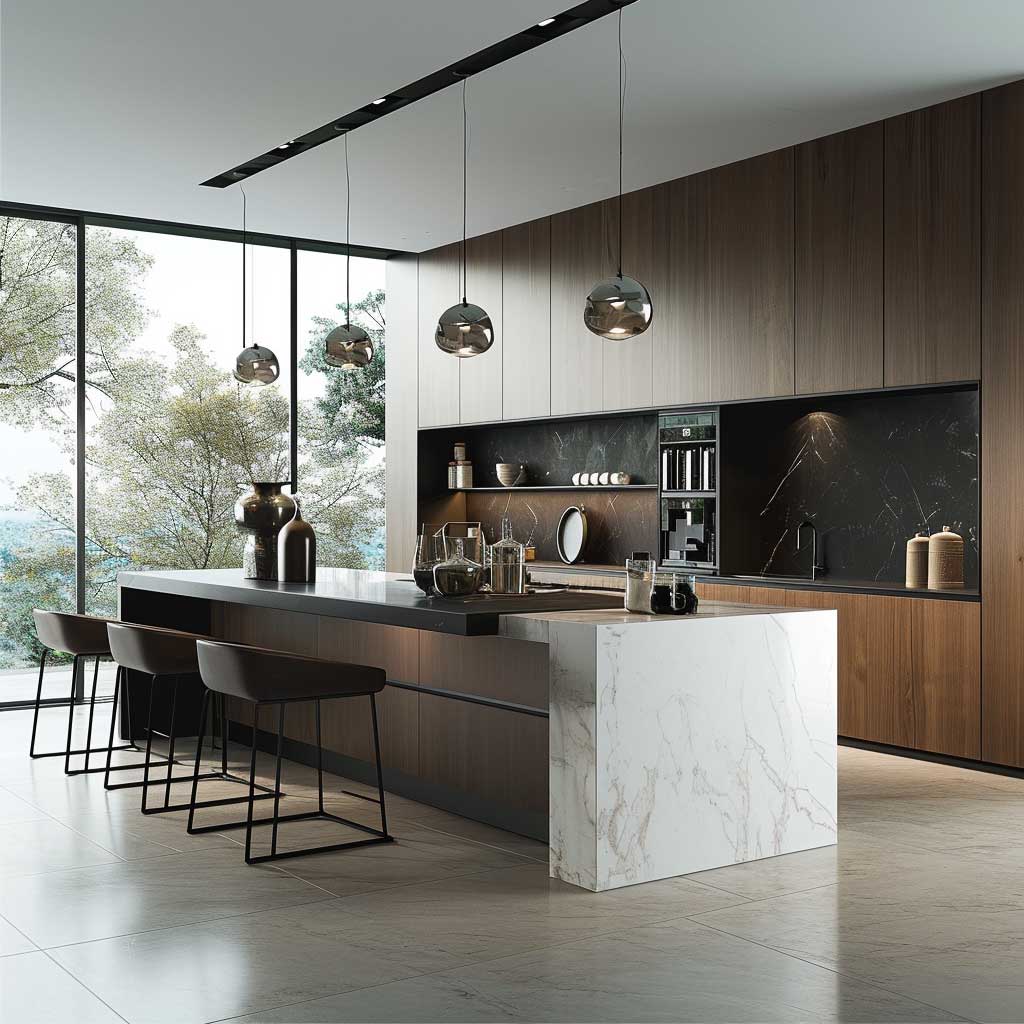
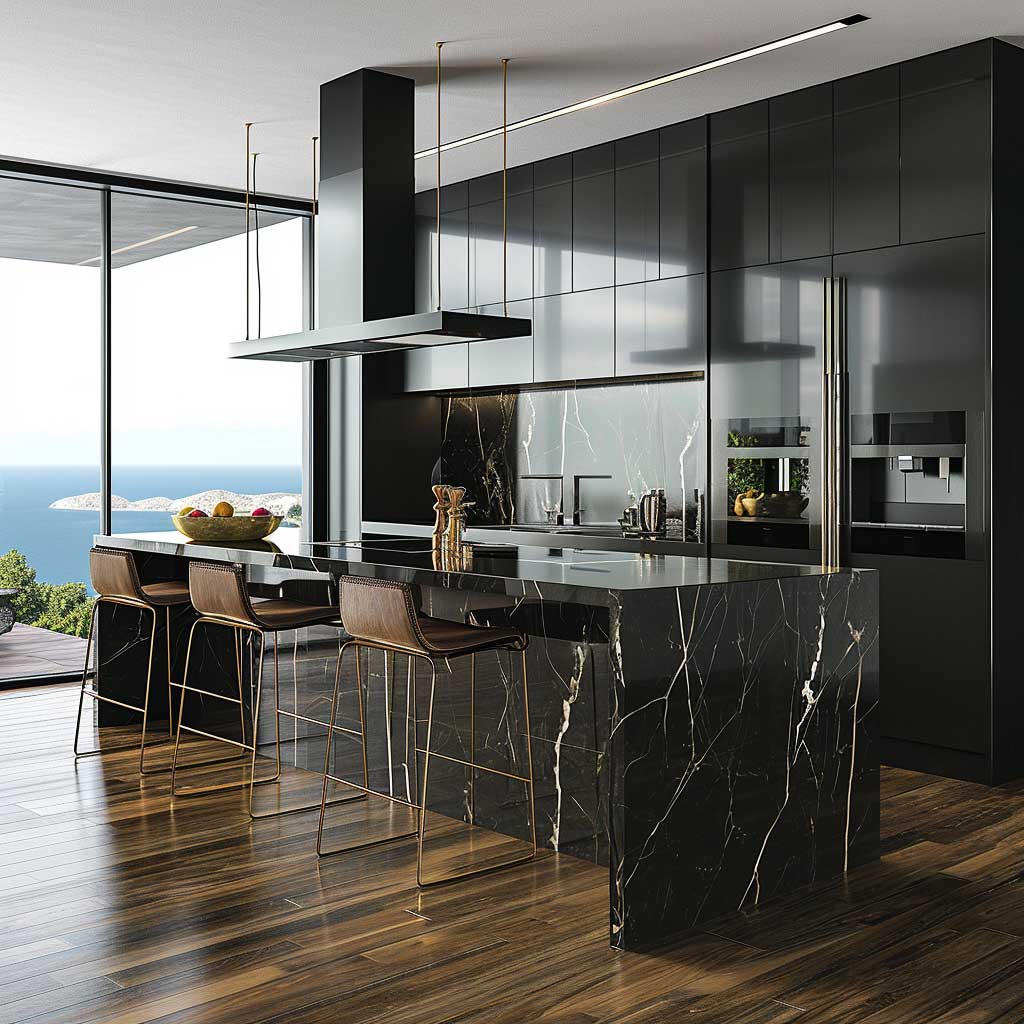
In the realm of home décor, the kitchen often holds a place of prominence, a space where functionality meets style. In contemporary kitchen design, this interplay is vividly expressed through sleek surfaces and bold lines, elements that define the modern aesthetic.
The allure of contemporary design lies in its ability to create spaces that are both aesthetically pleasing and highly functional. Sleek surfaces, often manifested in polished countertops, reflective backsplashes, and streamlined cabinetry, play a pivotal role in this design ethos. They are not just visually appealing but also practical, as their smooth texture makes cleaning and maintenance easier.
The use of bold lines in kitchen design is another hallmark of the contemporary style. These lines, often straight and unadorned, contribute to a sense of order and spaciousness. In a contemporary kitchen, every element, from the layout of the cabinetry to the shape of the kitchen island, is designed with precision. The lines not only guide the eye but also create a sense of continuity, seamlessly connecting different parts of the kitchen.
Color schemes in contemporary kitchen designs often lean towards a monochromatic palette, interspersed with bold color accents. The simplicity of black, white, and grey tones provides a backdrop that allows other elements of the kitchen to stand out. This could be a vibrant backsplash, a uniquely patterned floor tile, or even a set of colorful chairs. The monochromatic scheme underscores the sleekness of the surfaces and the clarity of the lines, bringing a harmonious balance to the space.
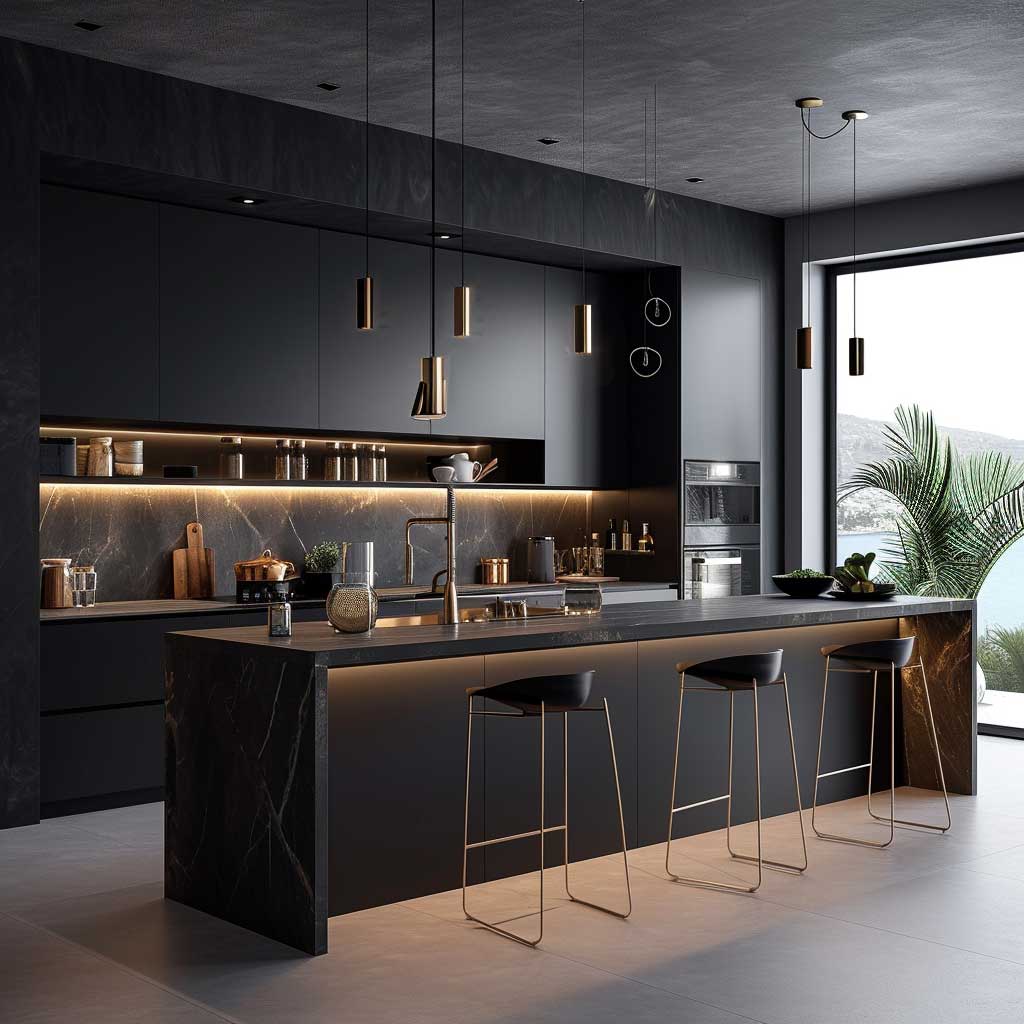
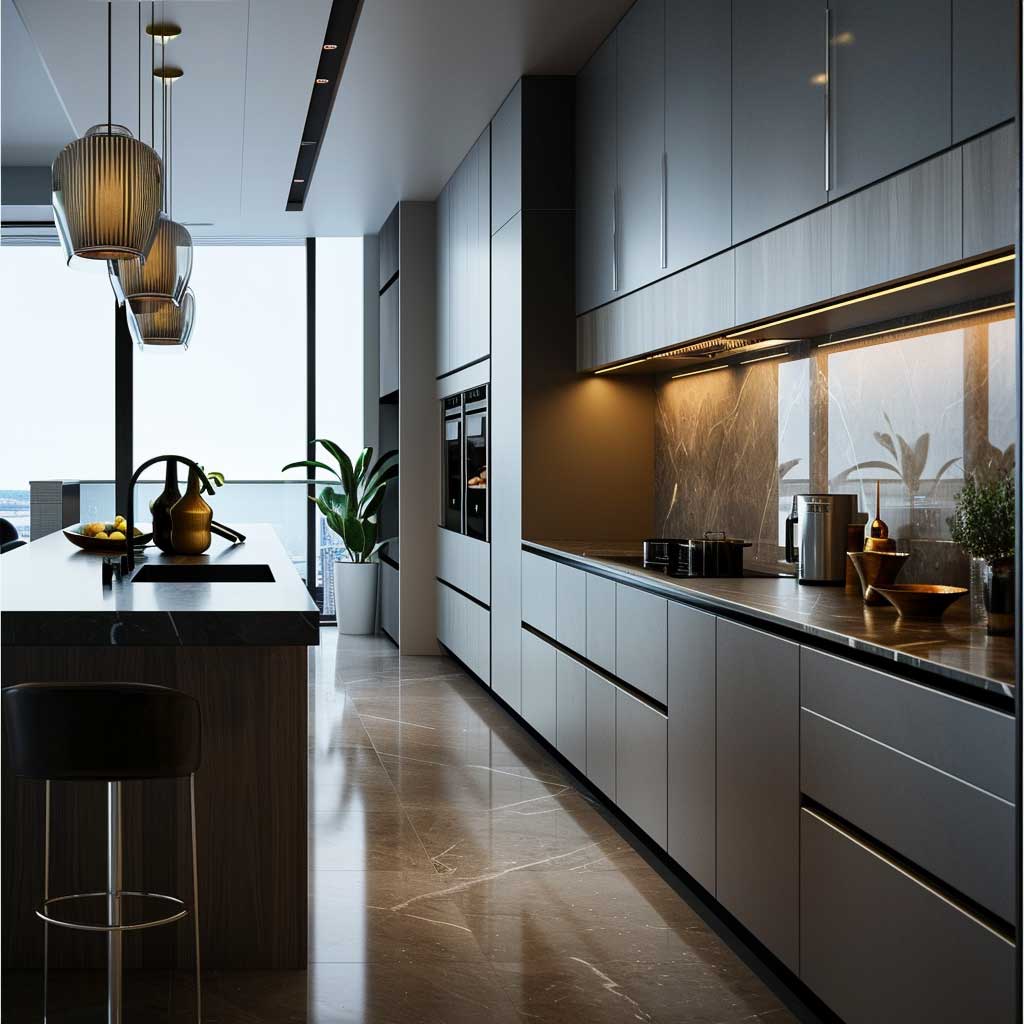
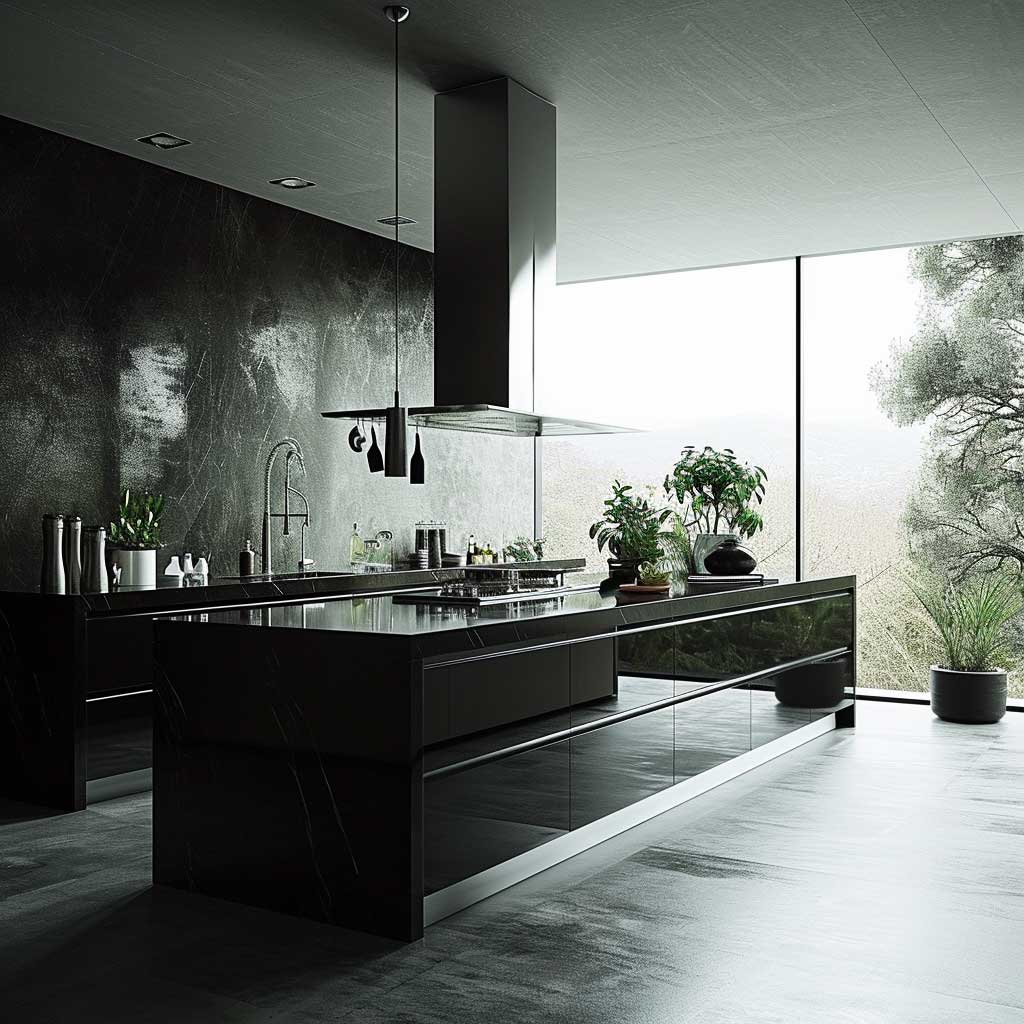

Lighting plays a crucial role in contemporary kitchen designs. The strategic use of light can enhance the kitchen’s sleek surfaces and bold lines. Under-cabinet lights, pendant lights over the kitchen island, and recessed lighting in the ceiling are popular choices. These lighting solutions not only illuminate the workspace but also add to the overall ambience of the kitchen.
The integration of technology in contemporary kitchens further accentuates their modernity. Smart appliances, touchless faucets, and integrated sound systems are becoming increasingly common, offering both convenience and a touch of luxury. These technological advancements blend seamlessly with the sleek design elements, further enhancing the kitchen’s functionality.
In terms of layout, contemporary kitchen designs often favor open plans. This openness not only makes the kitchen more inviting but also facilitates interaction between the kitchen and other living spaces. It allows the cook to engage with guests or family members, making the kitchen a social hub.
Sustainability is another aspect that has been seamlessly woven into contemporary kitchen design. Energy-efficient appliances, sustainable materials for countertops and cabinetry, and LED lighting are becoming the norm. These features not only reduce the environmental footprint of the kitchen but also resonate with the growing eco-consciousness among homeowners.
In conclusion, the essence of contemporary kitchen design lies in its ability to merge sleek surfaces and bold lines with functionality and style. This design philosophy not only creates kitchens that are visually stunning but also caters to the needs of modern living. Whether through innovative use of space, integration of technology, or a commitment to sustainability, contemporary kitchen design continues to evolve, always keeping in step with the times.
Innovative Use of Light and Space in Modern Kitchen Interiors
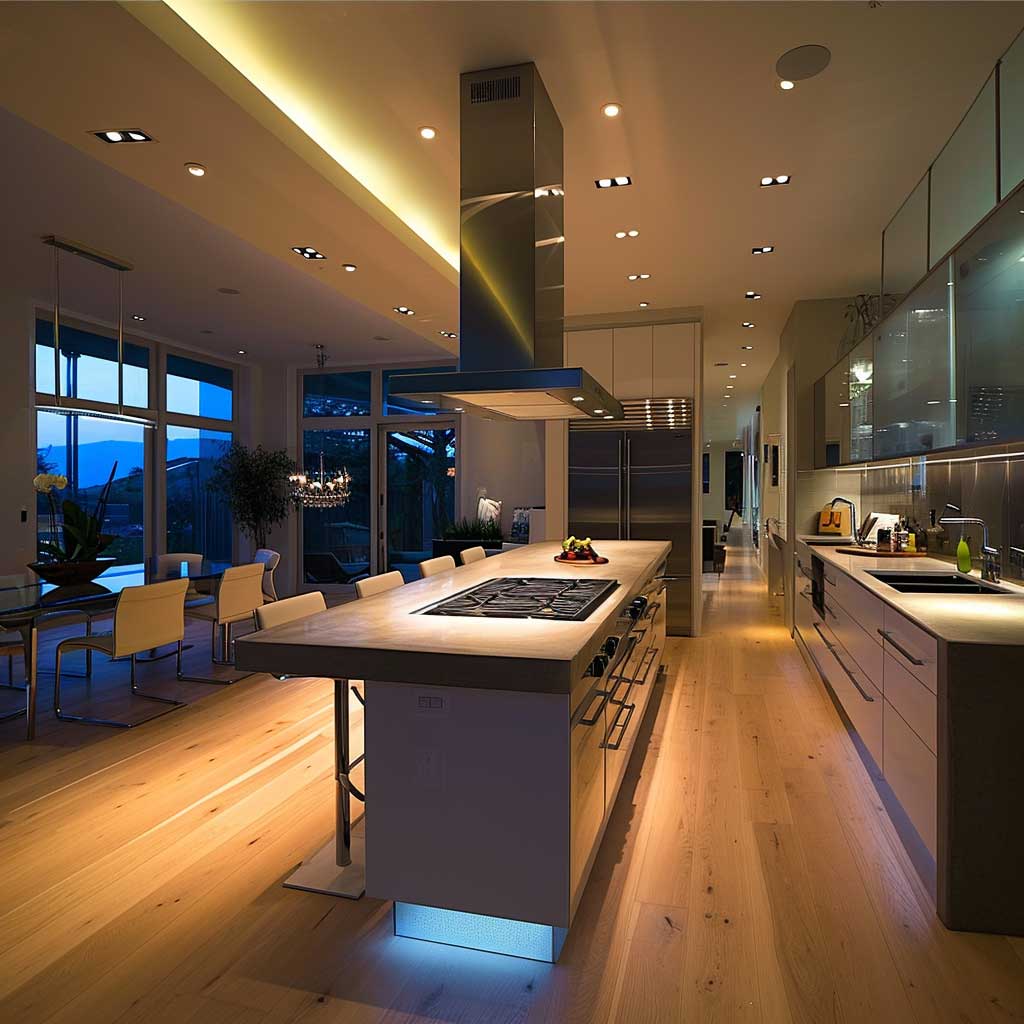

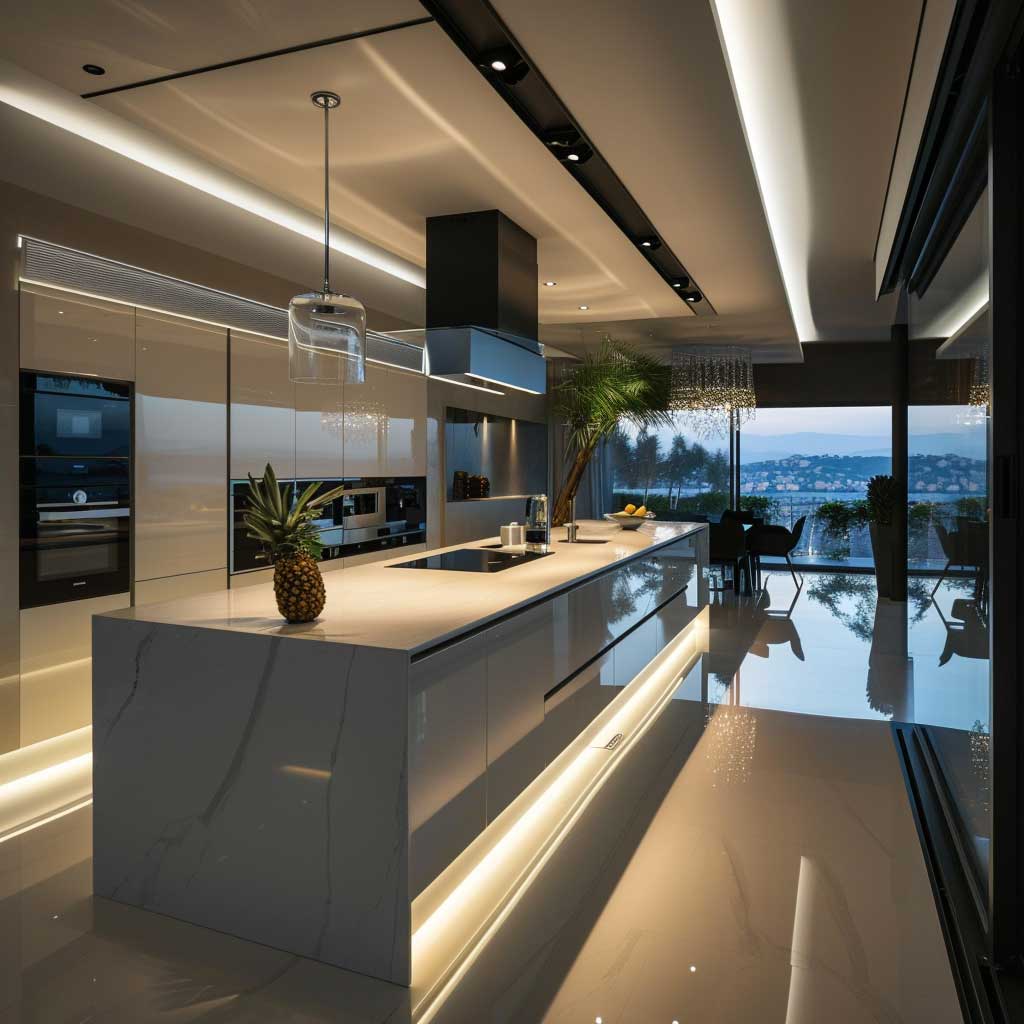

In the world of contemporary kitchen design, the innovative use of light and space stands as a cornerstone, transforming ordinary kitchens into extraordinary spaces. This approach transcends mere aesthetic appeal, venturing into the realm where design meets functionality, enhancing both the usability and the beauty of the kitchen.
Space utilization in contemporary kitchens is an art form. Designers and homeowners alike strive to create an area that feels open and uncluttered, yet fully functional. This is achieved through thoughtful layout planning, where every element, from the island to the cabinets, is placed with intention. The goal is to maximize efficiency without compromising on style. In these kitchens, minimalism reigns supreme, with a focus on creating a clean, streamlined look that still offers ample storage and work areas.
The magic of light in contemporary kitchen interiors cannot be overstated. It’s not just about illuminating the space; it’s about creating an ambiance, enhancing textures, and highlighting architectural details. Natural light plays a pivotal role, with large windows and skylights becoming a common feature in modern kitchen designs. They not only flood the space with daylight but also create a connection with the outdoors, making the kitchen feel larger and more welcoming.
Artificial lighting is equally important. It’s used not just for practical purposes but also as a design element. Contemporary kitchens often feature a combination of lighting types, such as under-cabinet lights that provide task lighting, pendant lights over islands that add a decorative touch, and recessed ceiling lights that offer general illumination. The placement and type of lighting are carefully considered to enhance the kitchen’s overall design and functionality.
The color palette in these kitchens also plays a crucial role in the perception of space and light. Light, neutral colors are often used to make the space feel larger and brighter. These hues reflect light, contributing to a sense of openness. Bold color accents can be introduced through backsplashes, appliances, or decor items, adding character and vibrancy to the kitchen.




Innovations in materials and finishes have opened up new possibilities in kitchen design. Reflective surfaces like high-gloss cabinets and metallic finishes not only add a modern touch but also help to bounce light around the room, enhancing the sense of space. Glass and transparent materials are also used to create a feeling of openness, often seen in cabinet doors or as part of the kitchen island.
Functionality remains a key aspect of contemporary kitchen design. Smart storage solutions, like pull-out drawers, corner cabinets, and built-in organizers, are essential in keeping the space tidy and efficient. The kitchen layout is often designed around the ‘work triangle’ concept, ensuring that the stove, sink, and refrigerator are placed for optimal functionality and flow.
Ergonomics is another important consideration. The height of countertops, the placement of appliances, and the layout of the kitchen are all designed with the user’s comfort in mind. This not only makes the kitchen more enjoyable to use but also improves safety.
In summary, the innovative use of light and space in contemporary kitchen designs is more than just a trend; it’s a reflection of modern lifestyle needs. These kitchens are not just cooking spaces; they are areas for socializing, relaxing, and enjoying life. The blend of functionality, aesthetics, and technology creates a space that is both inviting and efficient, perfectly suited to the demands of modern living.
Harmony of Colors and Textures in Contemporary Kitchen Styles
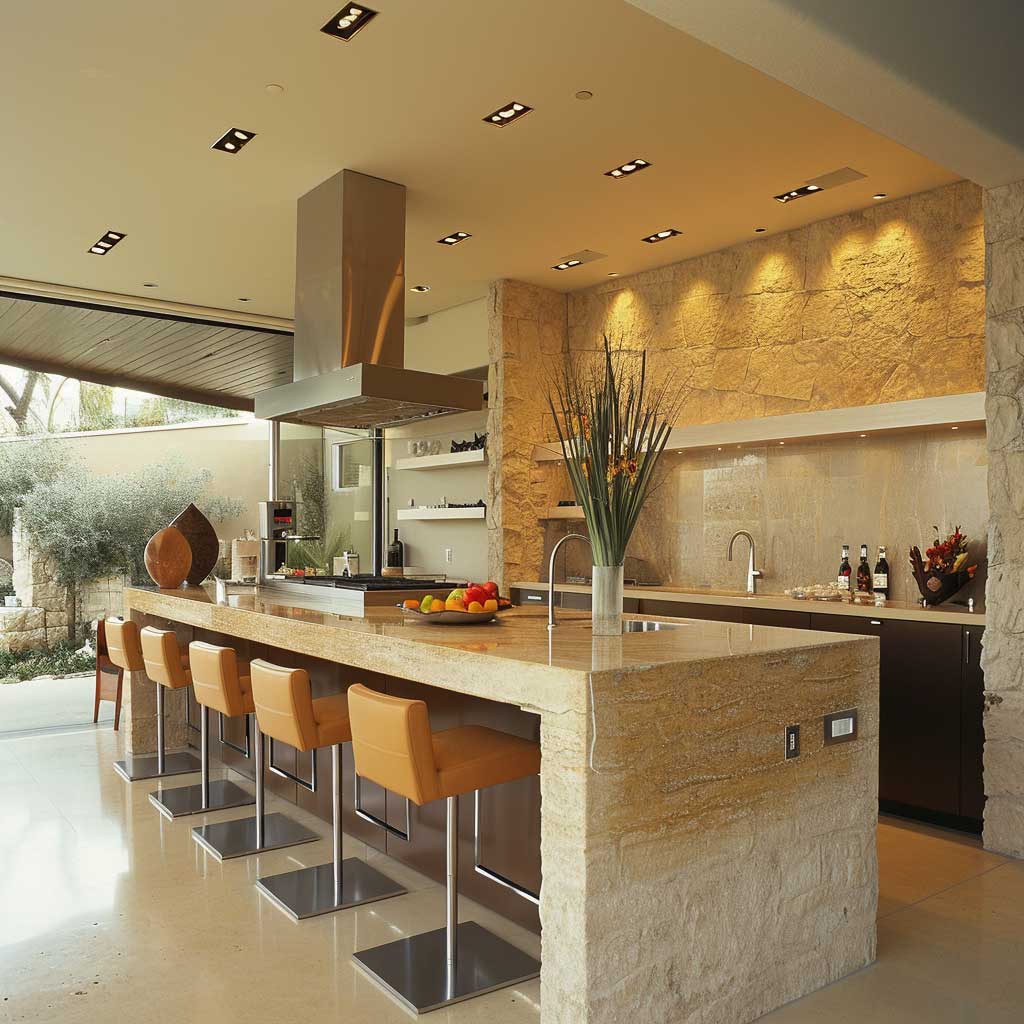
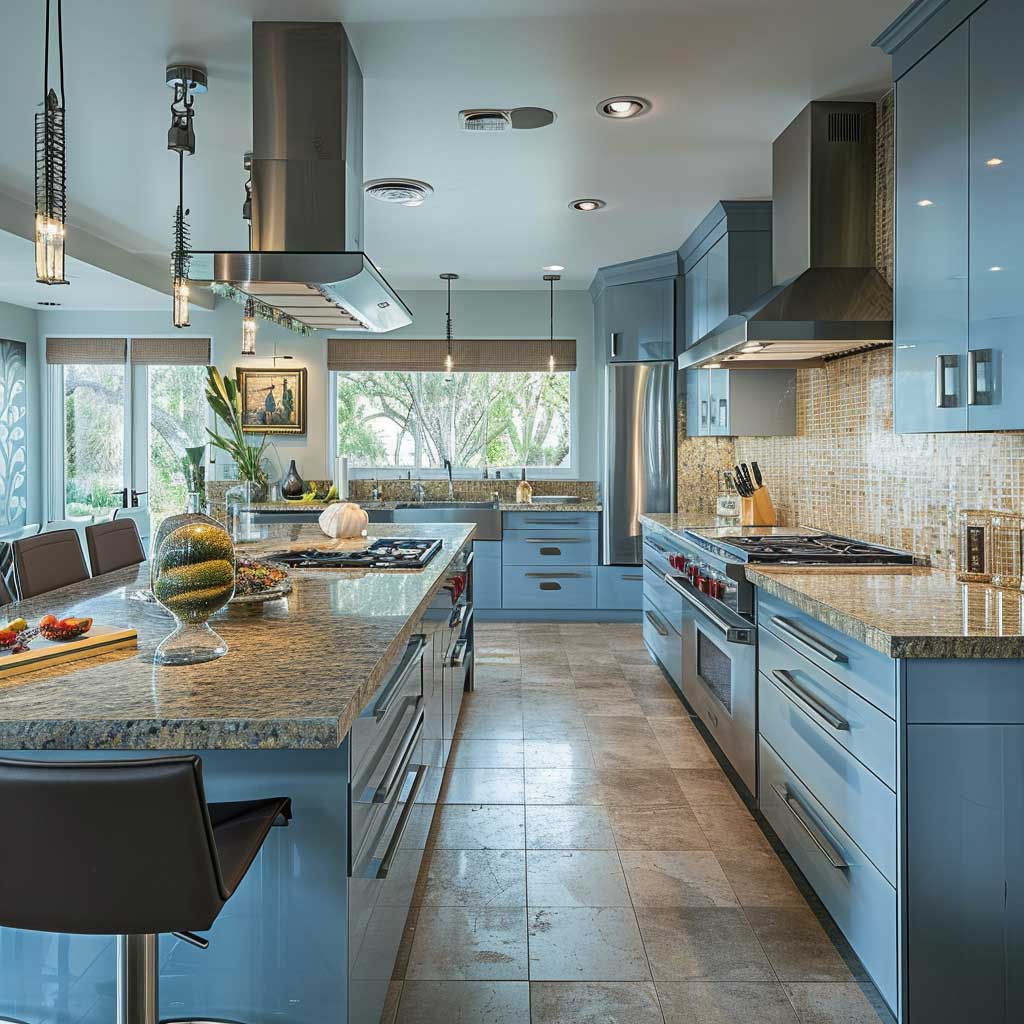
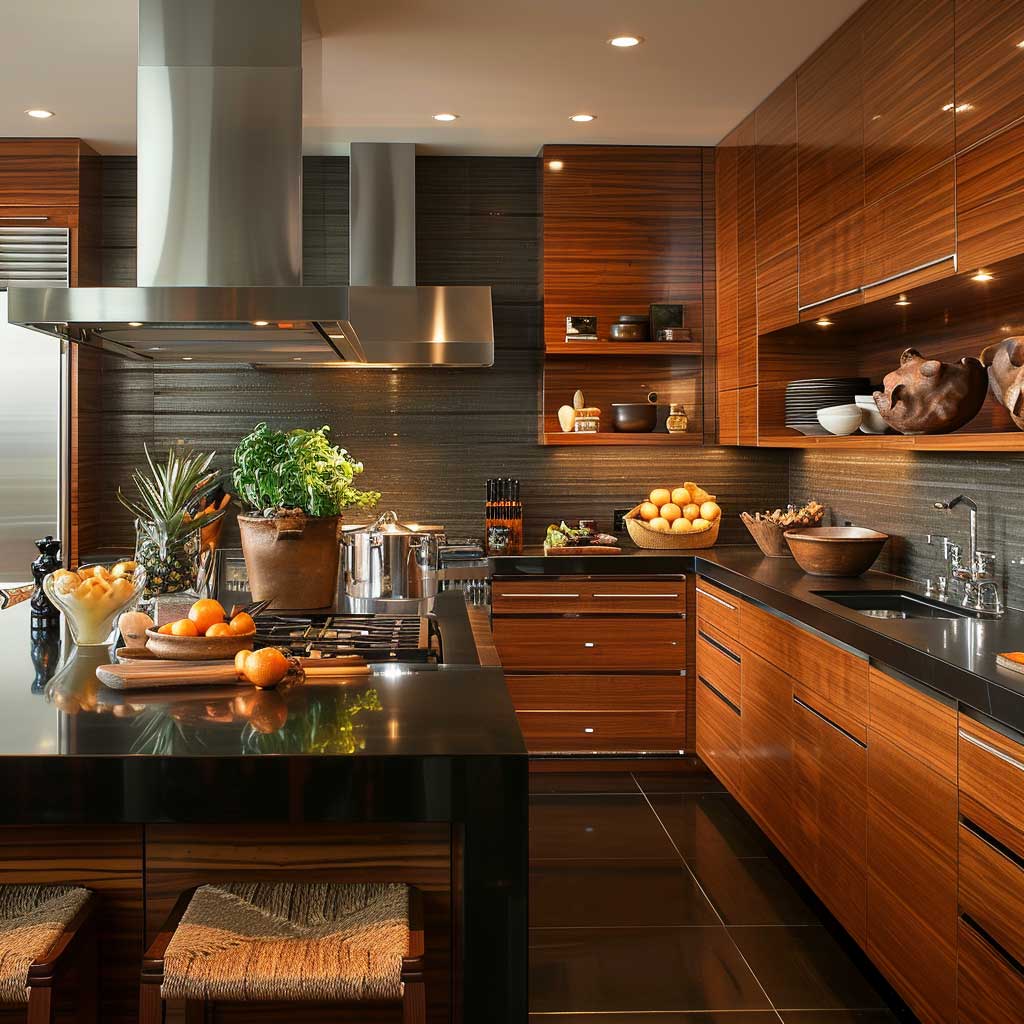
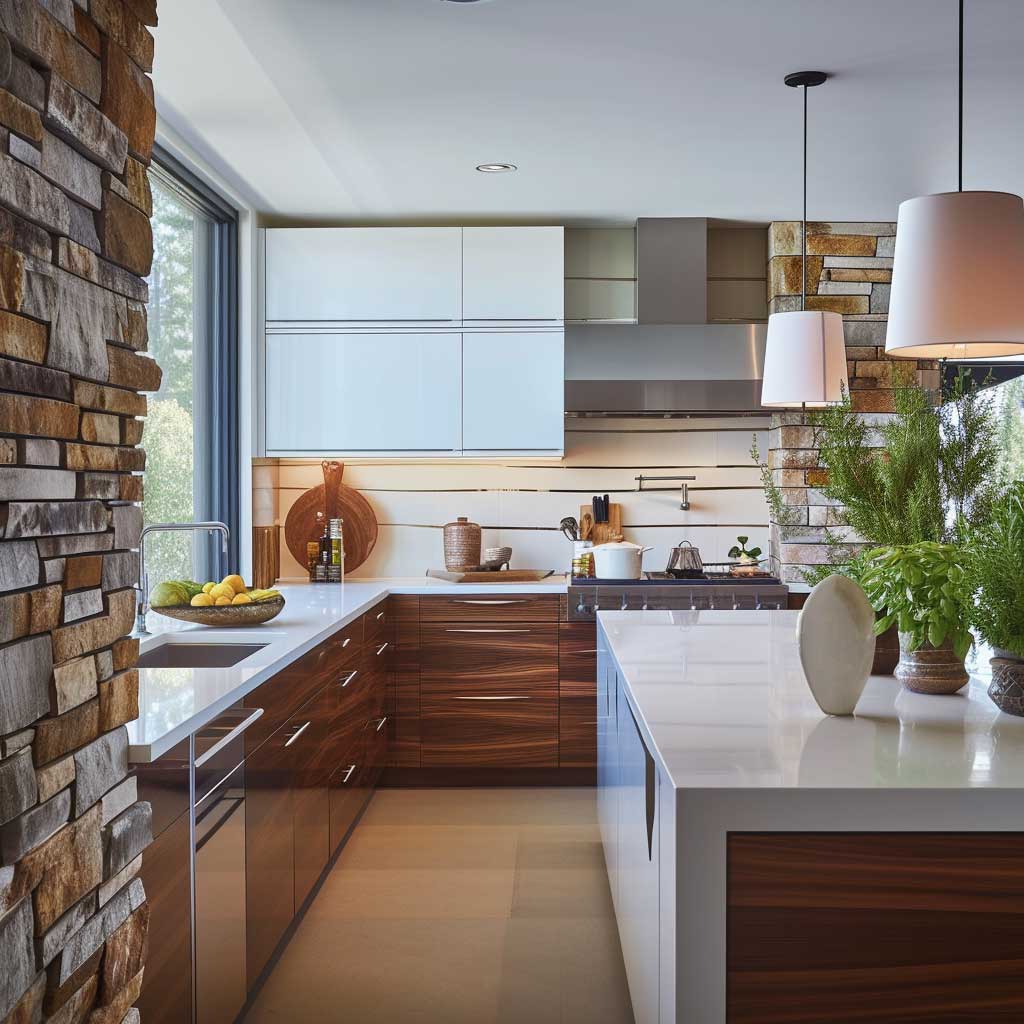
The interplay of colors and textures is a defining characteristic of contemporary kitchen design, crafting spaces that are as visually engaging as they are functional. This design philosophy embraces diversity in materials and hues, creating an environment that is both dynamic and harmonious.
Color selection in contemporary kitchens is a thoughtful process. The aim is to strike a balance between warmth and modernity. Neutral tones like whites, greys, and beiges often form the base palette, providing a calm and clean backdrop. Against this canvas, vibrant accents can be introduced through elements like backsplashes, bar stools, or even small appliances. These pops of color enliven the space, adding personality and interest.
Textures play an equally vital role. The juxtaposition of different materials adds depth and character to the kitchen. Glossy finishes on cabinets might be contrasted with matte countertops, or smooth stainless-steel appliances set against a textured stone wall. This variety in textures not only enhances the aesthetic appeal but also engages the senses, making the kitchen a more interesting and inviting space.
Wood, often used in contemporary kitchen design, brings warmth and natural beauty. Whether it’s in the form of sleek, flat-panel cabinets or a rustic, reclaimed wood island, wood adds richness and texture. Its versatility allows it to blend seamlessly with various design elements, from ultra-modern to more traditional components.
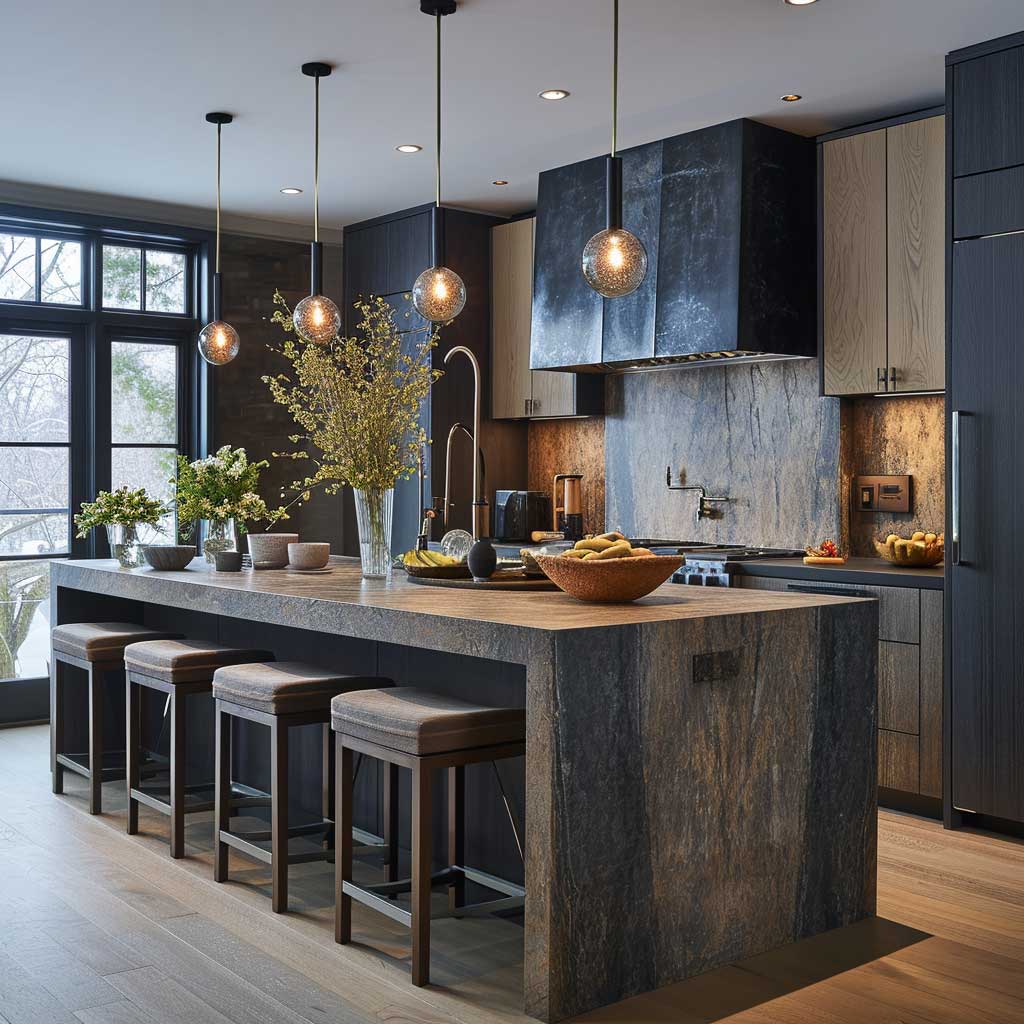


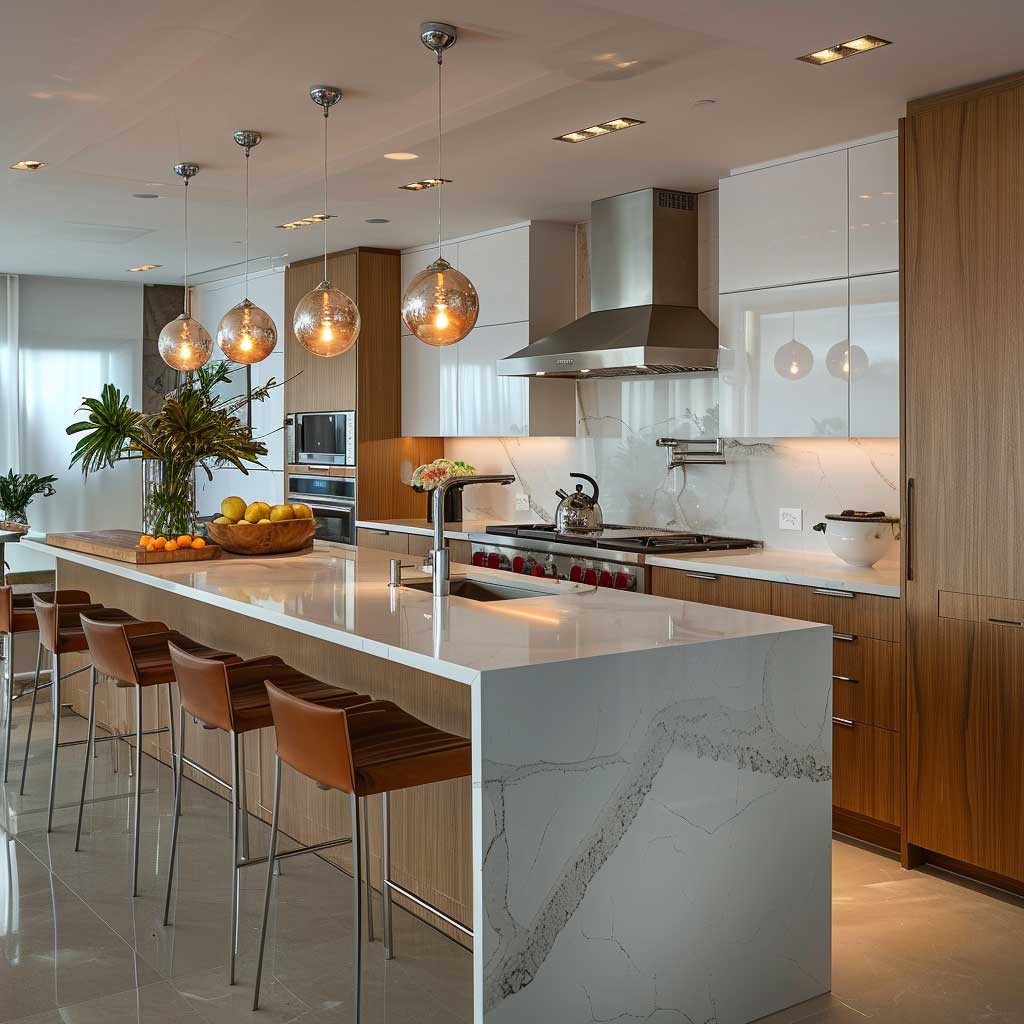
The flooring in a contemporary kitchen also contributes to the overall harmony. Choices like hardwood, polished concrete, or large-format tiles provide both durability and style. The color and texture of the flooring are selected to complement the rest of the kitchen’s design, tying the space together.
Innovative combinations of materials are a hallmark of contemporary design. Mixing metals, such as stainless steel and brass, or layering different types of stone, can create a unique and sophisticated look. These combinations reflect a fearless approach to design, where the goal is to create a space that is both unique and cohesive.
Lighting, as discussed earlier, also plays a role in highlighting the colors and textures. Well-placed lighting can accentuate the texture of materials, bring out the depth of colors, and create different moods in the kitchen. The use of dimmers and layered lighting allows for flexibility, adapting the space to different needs and times of the day.
In summary, the harmony of colors and textures in contemporary kitchen design is about creating a space that is visually rich and layered. It’s about finding the perfect balance between various elements to create a kitchen that feels cohesive and thoughtfully curated. This approach to design not only makes the kitchen aesthetically pleasing but also turns it into a space that reflects the personality and style of the

